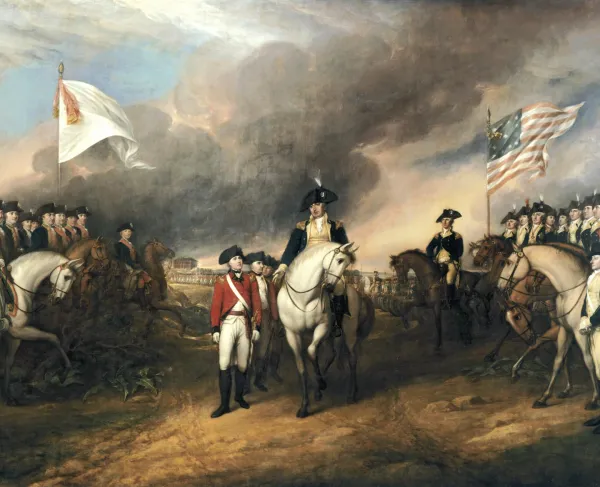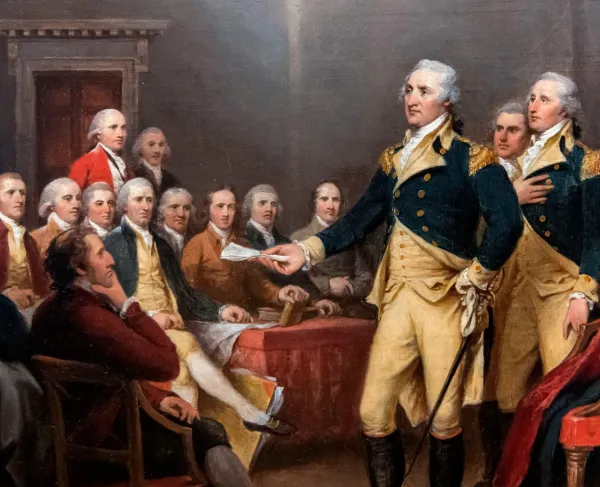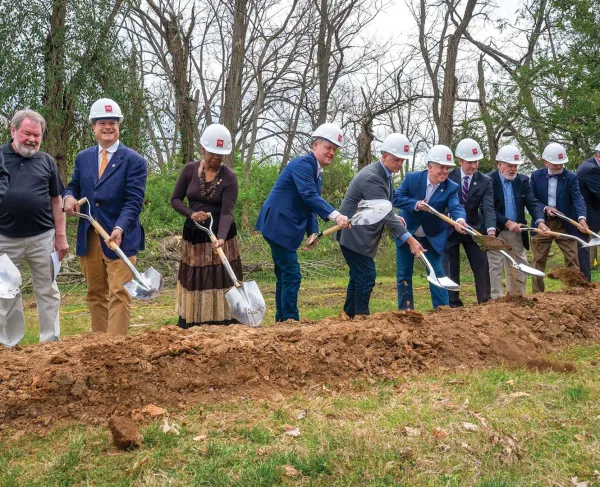
By the end of 1776 the fortunes of the Continental Army looked bleak, and General George Washington crafted a bold plan to surprise the British and boost the flagging morale of his army. The resulting “10 crucial days” not only reinvigorated the American Revolution, but also had a significant impact on the life of one of Washington’s officers—a young artillery captain named Alexander Hamilton.
The fervor of the American Revolution burned hotly in Alexander Hamilton’s veins. As an undergraduate at King’s College (now Columbia University), Hamilton was already a strong proponent for American independence, writing several essays in local newspapers attacking British policies. As discord between the colonies and Great Britain turned violent, the young West Indian immigrant determined to risk his life for his adopted country by joining the army. "I was born to die," he wrote, "and my reason and conscience tell me it is impossible to die in a better or more important cause." Using connections forged shortly after his arrival in America, Hamilton secured a commission as captain of an artillery company and immediately prepared it for war.
Under Hamilton’s sure hand, his Independent Company of New York Artillery soon became one of the crack units in the Continental Army. The 21-year-old captain voraciously studied military manuals and fastidiously trained his men in the use of their pieces. During the New York Campaign, Hamilton’s New Yorkers fought at Kip’s Bay, Fort Washington and White Plains, performing admirably even as the army suffered defeat. It is a testament to Hamilton’s leadership that during Washington’s retreat from New York one observer deemed Hamilton’s company “a model of discipline.” General Washington personally observed Hamilton as he directed his battery in a rearguard action on the Raritan River that autumn, and was "charmed by the brilliant courage and admirable skill" of the artillerist.
When Washington’s troops crossed the Delaware River on Christmas night, 1776, Hamilton was among those ferrying the Continental Army’s cannons across the ice-choked water. He made an eight-mile march to take part in the Battle of Trenton, where his guns (along with another battery) overpowered the Hessian garrison and helped bring about the surrender of numerous enemy troops. After performing well during the army’s defeats earlier in the year, it must have been exhilarating for Hamilton and his men to taste victory.
Washington wasn’t done experiencing triumph, though, and neither was Hamilton. On the night of January 2, 1777, Washington withdrew his men from Trenton, flanking the British army in his front, and advanced on Princeton early the next morning. Washington’s men locked horns with a portion of the British rearguard just outside of town, launching the Battle of Princeton with a vicious firefight.
As Washington galloped to the field, the battle reached a crisis. British regulars drove the Continentals back at bayonet point, threatening to rout Washington’s army. Seeing the crisis at hand, Washington personally rallied his men and led a counterattack that swept the field. For the first time, American forces had beaten British regulars.
While Washington led his troops to glory, another American column, including Hamilton and his New York artillery company, advanced on Princeton itself, forcing the British to retreat onto the grounds of what is now Princeton University. According to legend, as British troops knocked out the windows of Nassau Hall, Hamilton’s men unlimbered and prepared for action. The New York battery commander, who had been rejected from the college when he first arrived in America, now opened fire on the brick building, supposedly destroying a portrait of King George III in the process. The British quickly surrendered, putting an exclamation point on the daring statement the Americans had made that day.
Though the war dragged on for several more years, the Battle of Princeton was Hamilton’s last as an artillery commander. On January 20, 1777, scarcely more than two weeks after the Battle of Princeton, Washington invited Hamilton to join his personal staff. The young man who just a year earlier had been writing tracts in favor of a new nation was now part of the inner circle of that nation’s most powerful figure. Hamilton’s actions—from New York to Princeton—had earned Washington’s trust, thus inaugurating a political friendship that would shape the fate of the country they fought to establish.
Related Battles
75
270
5
905





